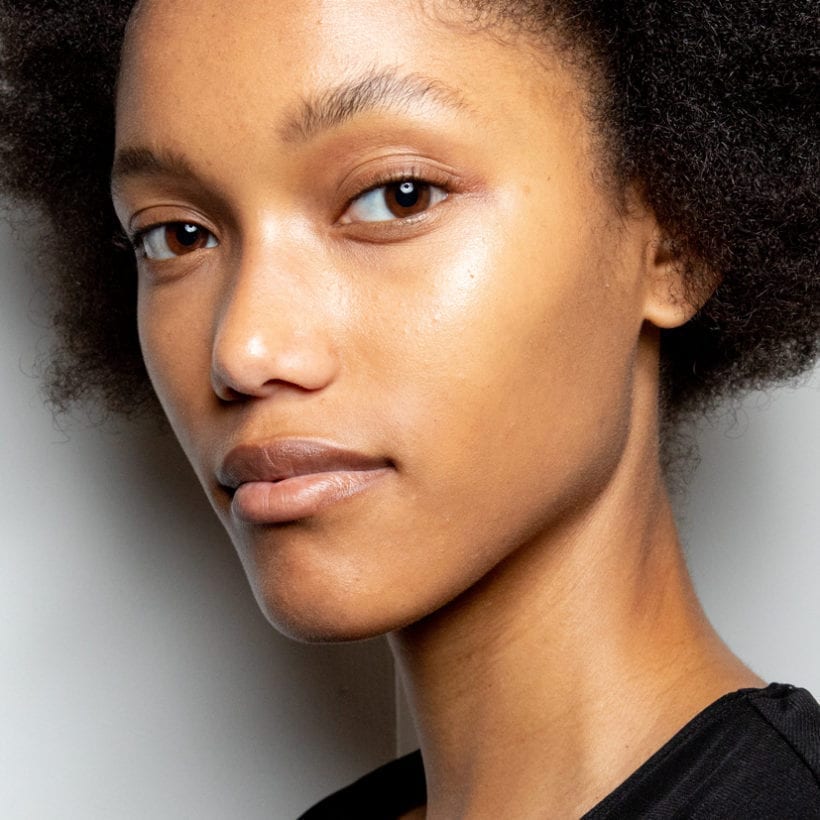Every few days, I catch myself using my index finger to lift the skin that rests right above the crease of my left eyelid. I blame my fixation on my naturally asymmetrical eyes and the fact that I am constantly looking at myself through a 12-inch screen (thanks to 18 months of Zoom meetings), which has made me hypercritical of my features. At 42-years-old, I hate to admit that the effects of time are starting to catch up with me, and despite all the aesthetic interventions that I drop serious cash on, there comes the point when surgery is the only option. Or is it?
Upneeq: The game-changing eye drops and how it works
Osmotica Pharmaceuticals’ Upneeq is an FDA-approved prescription eyedrop that lifts droopy eyelids. The drops give a relatively immediate lifting effect without the need for needles, injections, or surgical incisions. “Upneeq increases the distance between the upper and lower lids to show more of the colored part of the eye, so it makes the eyes a little wider,” says board-certified oculofacial plastic surgeon Brian Biesman, MD.
The main ingredient in Upneeq is oxymetazoline hydrochloride — it’s also in Visine and Rofade, just in a different composition — which stimulates the Muller muscle, a smooth muscle on the backside of the inner upper eyelid. “As the drops migrate across the eyes, they incite muscle contraction of the lid, which gives a temporary ‘open’ effect,” adds Dr. Biesman.
About five to 15 minutes after using the drops (in some, it can take up to two hours to work), the upper lids become more open, and the eyes are whiter. “Lifting the lids makes the eyes appear bigger, which, in some people, is aesthetically pleasing,” notes board-certified oculofacial plastic surgeon Steven Faigen, MD. But despite the impressive results, the lifting effect only lasts six to eight hours, making this the perfect Cinderella fix for a big event or special occasion.
Who is it good for?
Anyone who suffers from mild to moderately saggy lids that look ‘sleepy’ or has acquired blepharoptosis (a.k.a. low-lying lids) can benefit from Upneeq. However, board-certified oculoplastic surgeon Raymond Douglas, MD, says it’s important to “always make sure that the drooping is not due to a medical problem.”
As for how long you can use Upneeq, board-certified cosmetic dermatologist Dendy Engelman, MD, who uses Upneeq herself, says one drop per eye per day is safe for daily use. “Depending on the severity of the condition and other circumstances, the patient and their doctor can decide how long to use Upneeq,” she adds. According to the company, patients who received Upneeq experienced significant improvement in the visual field compared to the placebo group in clinical trials. In addition, most users tolerate the drops well, and the only reported side effects are minimal redness or dryness.
Some doctors like Upneeq for correcting Botox ptosis (drooping of the lid due to injections of a neurotoxin). “It acts like a rescue option and is helpful for this rare side effect,” he adds.
Drops vs. Surgery: Which one to choose?
Placing a few drops in your eyes to improve saggy eyelids is undoubtedly more accessible, cheaper, and less painful than plastic surgery. But, Dr. Faigen says, “an eyedrop like Upneeq only temporarily works on lid ptosis and does nothing to address the skin or fat, which we correct with surgery like blepharoplasty.” Another benefit of Upneeq: you can test drive what you may look like after an eye lift.
Placing a few drops in your eyes to improve saggy eyelids is undoubtedly more accessible, cheaper, and less painful than plastic surgery.
When done correctly, eyelid surgery can permanently correct sagging lids, remove a few millimeters of excess skin, and reposition the underlying tissue, muscle, and fat, all of which are necessary to create a refreshed, youthful appearance. But not everyone is willing or able to go under the knife, and Upneeq, which lifts the lids by about one millimeter, is the next best thing for those people.
However, it’s essential to have realistic expectations. As Dr. Engelman explains, “the results of Upneeq will be less noticeable than those of surgery. Surgery is a one-and-done procedure, whereas Upneeq must be administered daily if you want to keep seeing results.” Overall, it comes down to the severity of the blepharoptosis. “For patients with severe blepharoptosis, surgery may be a more effective option. Milder cases may wish to avoid the cost and risks by opting for a non-invasive treatment like Upneeq,” asserts Dr. Engelman.
And, of course, there’s the cost factor. There’s no denying that the $105-per-month drops are less expensive than an eye lift, which according to the American Society of Plastic Surgeons, averages around $4,100. You’d have to use Upneeq almost every day for a little more than three years to come close to the price of surgery.
Science-based beauty is an ever-evolving eye-opener. There are more quick fixes and nonsurgical options than ever before; it’s essential to do all of your homework, and of course, see a board-certified dermatologist or plastic surgeon who can help you make the best choice for your needs.







